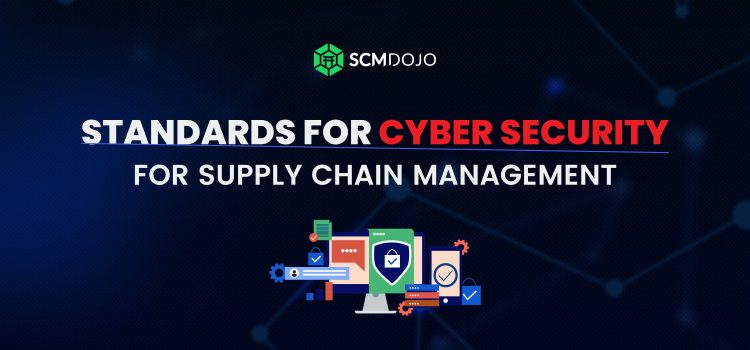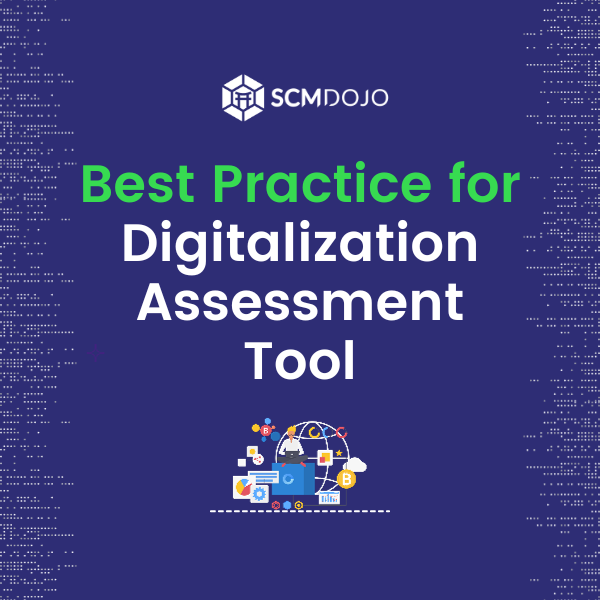Cyber Security For Supply Chain Management has the potential to become a more significant issue. It is not unexpected that operational risks have become a problem for retail companies, given the development of internet purchasing. However, what does “supply chain cybersecurity” actually mean? How can you make sure your business is defending itself against online threats? This blog post will discuss supply chain security regulations in detail, including how they operate and what kind of standards your company should adopt.
What is a Supply Chain Attack?
A supply chain attack is a type of cyberattack that targets businesses by striking the weaker links in their supply chain, such as outside suppliers or vendors who offer software, hardware, or services. Hackers obtain unauthorised access to the supply chain and spread malware across the network by infecting a supplier’s software or hardware, leading to serious data breaches. Because the compromised components could already be widely dispersed across the chain by the time the assault is identified, supply chain attacks can be challenging to identify and mitigate.
A supply chain is a network of people, businesses, facilities, and procedures used in manufacturing, transporting, and selling goods. Transportation of resources from the supplier to the manufacturer, production, and delivery of the finished product to retail locations and customers are all included in the process of getting the goods or services to the consumer. And a supply chain attack might target any link in this chain. But how precisely do these assaults operate?
How do Supply Chain Attacks Work?
Depending on the attacker’s goals and the weaknesses they target, supply chain attacks can be carried out in various methods. Cybercriminals conduct supply chain assaults in the following ways:
- Insecure software. Malicious code can be created to steal data, interfere with business processes, or seize control of systems. Customers who install or use tainted items propagate malware, which damages systems or processes or steals data. Because the malware needs to be injected into a protected system and concealed behind legitimate processes, these attacks are highly sophisticated and well-organized. To avoid this, businesses should consider using a high-quality VPN because the use of a VPN can secure your system from cyber threats. That’s why buying VPN is helpful to secure your businesses from malware, phishing attacks, and viruses.
- Play with the physical elements. Bad actors can physically change or replace genuine hardware components, including USB drives, phones, tablets, and keyboards, with malicious ones. To transport data outside of the network, they might place chips on network devices, which could lead to long-term data breaches and surveillance. Yet, because they are so challenging to carry out, these kinds of attacks are uncommon and frequently necessitate the presence of a human inside.
- Hack the firmware. This entails introducing harmful code into the booting code of a machine. The malware spreads and corrupts the entire system as soon as the computer starts up. Attacks on the firmware supply chain are swift, hardly noticeable if you aren’t looking for them, and very destructive.
Define Objectives And Priorities of Cyber Security For Supply Chain
Establishing your priorities and goals is crucial before you begin working on a solution. Additionally, it’s critical to focus on your own objectives rather than those of others. You should be aspirational but grounded in reality. For instance:
Set a goal of losing 1 pound every two weeks if you want to lose 10 pounds in three months (or whatever works for your body type). You will have some space for mistakes while still being able to accomplish this.
If someone else asked me to run a marathon in 30 days at a six-mile-per-hour pace (which would take them 2 hours), but I wasn’t feeling it at the moment, I’d rather just continue with my present routine instead.
Establish A Communications Plan
Determine who should be represented in the communication strategy. Ensure you define each team member’s tasks and responsibilities because this is not a one-size-fits-all strategy. There may be some overlap between the needs for knowledge exchange or coordination between, say, the departments of finance and procurement, whose personnel may need to contact one another.
What are the most important messages you need to convey? This can keep everyone’s attention on what really matters—and what doesn’t! Also, it’s crucial since it ensures that no crucial information is misunderstood at any level of communication, from preparing things beforehand to delivering them to their final destination (or point across town).
Assess Current Environment And Standards
- Assess the current environment and standards.
- Define objectives and priorities.
- Establish a communications plan.
Rank the importance of important security measures for your business’s goods, services, systems, and assets, including authentication, authorization, and access management; privacy protection; incident response potential; cyber threat (IIoT) capabilities; and vulnerability management procedures in place. Have you evaluated how much of a cyber risk these assets pose? If not, what else must be completed before using this strategy? Is there any proof that these hazards could be reduced by using appropriate controls or procedures?
Prioritise Key Controls
It’s crucial to assess your risk and rank your controls according to the data you have. For instance, you might need to ensure that your supply chain’s companies employ encryption and authentication techniques if there is a lot of data sharing between them. However, if there is simply internal data exchange between employees, such as when they write emails to one another directly, then this might not be as significant.
Also, you can use this procedure to evaluate the standards your organisation uses to safeguard its assets from cyberattacks. Are all parties participating in the process upholding these standards? If not, how can we change them to ensure the long-term security of our company?
Identify Operations, Systems And Assets
You ought to be familiar with the tools, resources, and business procedures your company uses. If you work in manufacturing, for instance, you could be able to name your supply-chain administration (SCM) systems as follows:
- The department of buying
- The factory floor
- The delivery division
Understand Processes And Procedures
It’s crucial to comprehend the procedure. It’s critical to recognise how different firms manage supply chain risk using different methods and procedures.
You may decide what needs to be done to reduce the risks connected with cyber security for supply chain for your firm by studying how these processes operate.
Common Criteria
A set of standards known as Common Criteria is used to evaluate the security of IT systems and products worldwide. It was created by the Functional Safety Recognition Arrangement as an international standard (CCRA).
In spite of the fact that it was initially intended to promote compliance with EU Directives, it has subsequently been expanded to cover additional topics like supply chain management. The CCSA has undergone numerous updates throughout the years in response to rising demands from clients or governments who want their supply chains to be evaluated in accordance with these standards.
PCI Standard
A set of guidelines called PCI DSS is used to safeguard cardholder data. Each company handling payment card information must comply with it, and it mandates that businesses protect their patrons’ personal information by adhering to tight security protocols.
The four security types covered by the PCI DSS standard are:
- Access control is the process of preventing unauthorised users from entering systems that contain personal information (like credit card numbers).
- How to prevent unauthorised individuals from entering physical locations where sensitive data is housed or transported.
- Asset management refers to the processes you use to keep track of the availability and condition of any assets that store, process, or transfer client information, as well as their backups and encryption keys; These checks should be updated frequently, and if possible, local storage should be used instead of distant storage. Use distinct passwords on all of the organization’s systems to prevent someone who has access to one from also having access to the others (called “multi-factor authentication”).
There are Several Different Standards That Organizations Can Use to Protect Their Supply Chains
For supply chain security, there are a number of distinct standards. SCSS, which stands for Protection and Consistent of Supply Chain Security, is the most popular. The Global Needs Full (GSO), a group that includes many of the biggest businesses in the world, created this standard.
CIAAM is another widely used standard (the CIA Automation & Motorized Materials Handling). Although it is more prescriptive than SCSS, it can still be useful to use as a first step before moving on to more complicated ones like PCI-DSS or ISO/IEC 27001:2013. Both of these are more comprehensive tools that demand a significant time and financial investment before they are fully properly defined within your institution’s networks and systems.
Conclusion
As we’ve seen, there are numerous standards and recommendations to battle again cyber security for supply chain. Before beginning any kind of programme or initiative, it’s critical to know which one best suits your firm.
About the Author- Dr Muddassir Ahmed
Dr MuddassirAhmed is the Founder & CEO of SCMDOJO. He is a global speaker, vlogger and supply chain industry expert with 17 years of experience in the Manufacturing Industry in the UK, Europe, the Middle East and South East Asia in various Supply Chain leadership roles. Dr. Muddassir has received a PhD in Management Science from Lancaster University Management School. Muddassir is a Six Sigma black belt and founded the leading supply chain platform SCMDOJO to enable supply chain professionals and teams to thrive by providing best-in-class knowledge content, tools and access to experts.
You can follow him on LinkedIn, Facebook, Twitter or Instagram



